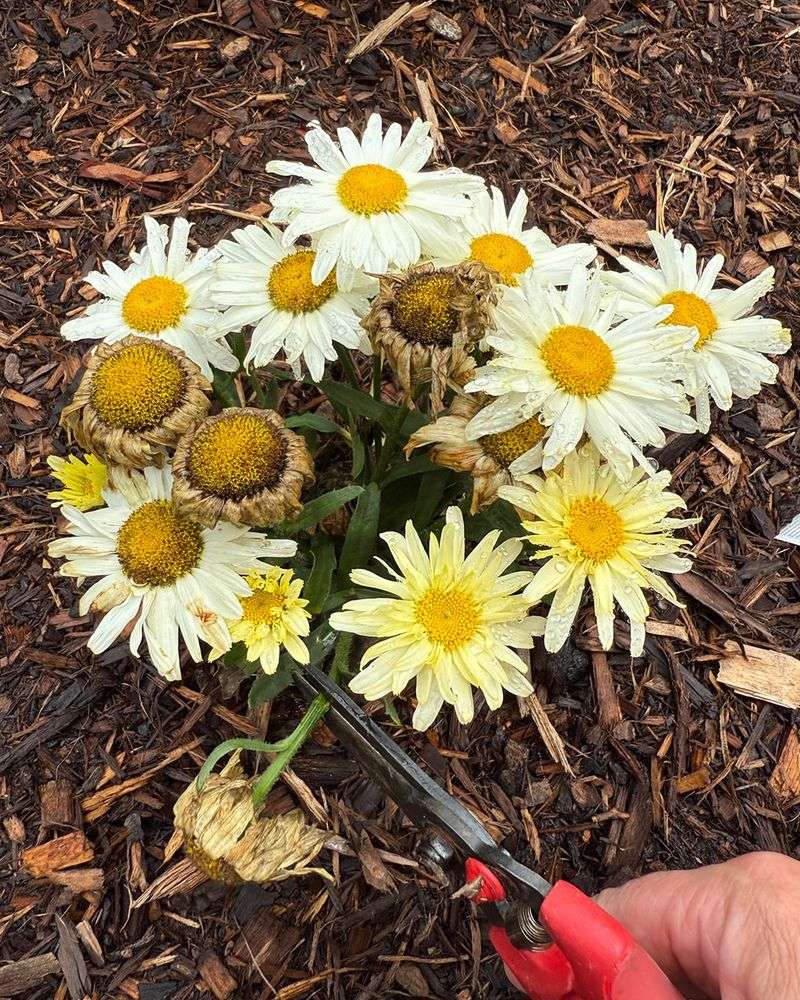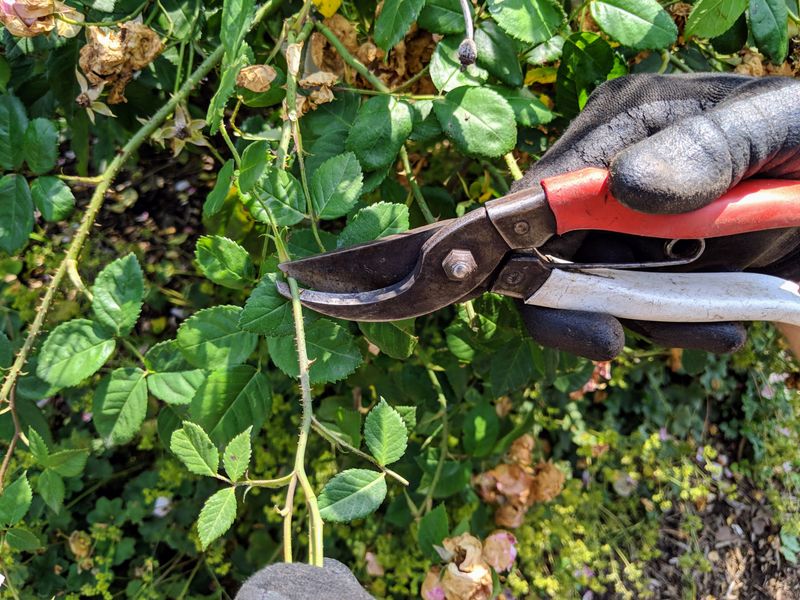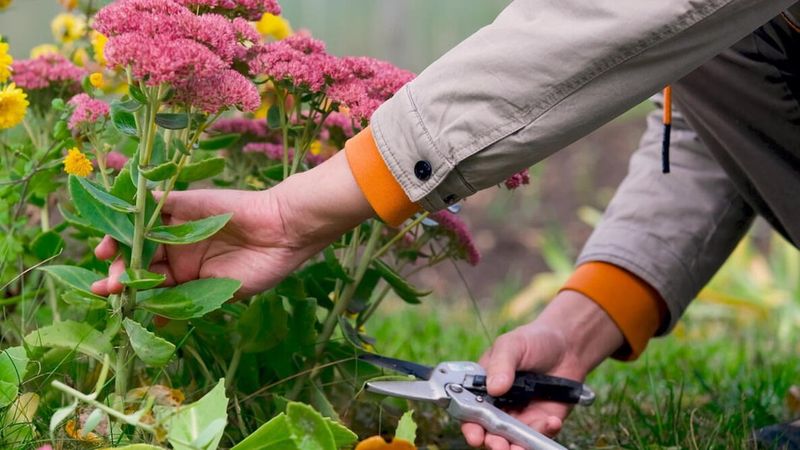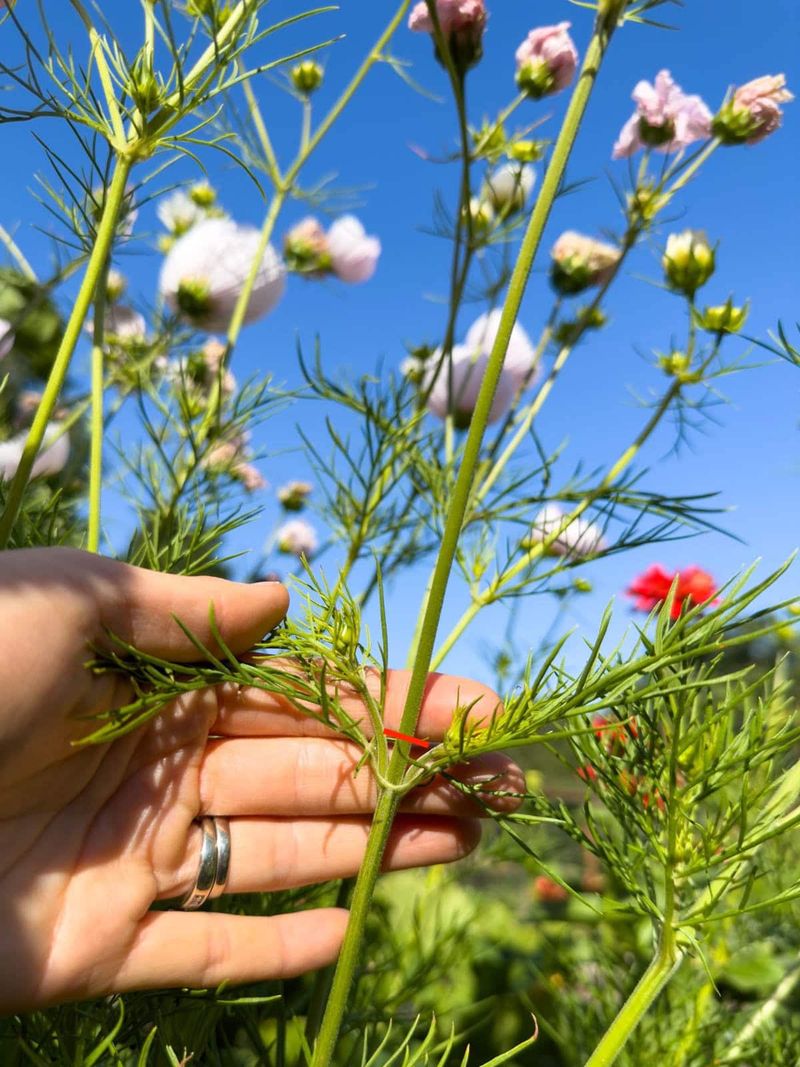Most gardeners know deadheading keeps flowers blooming longer, but many miss a crucial trick. Instead of just snipping off the faded bloom, cutting back to the first healthy set of leaves makes a world of difference.
Missouri gardeners have mastered this simple technique to keep their gardens bursting with color all season long.
Locate The First Set Of Healthy Leaves Below The Spent Bloom
Before you make any cuts, take a moment to examine your plant carefully. Look down the stem from the faded flower until you spot a set of leaves that appear vibrant, full, and completely healthy.
These leaves should be green without any yellowing, browning, or damage. Many Missouri gardeners rush this step and end up cutting in the wrong spot, which can slow down new growth.
Finding the right leaves ensures your plant has enough energy stored to produce fresh blooms quickly.
Use Sharp, Clean Pruning Shears For A Precise Cut
Dull or dirty tools can actually harm your plants more than help them. When you use sharp shears, you create a clean cut that heals faster and reduces the risk of disease entering the plant.
Before you start deadheading, wipe down your shears with rubbing alcohol or a disinfectant. This small step prevents spreading infections from one plant to another.
Your flowers will thank you with healthier, more abundant blooms throughout the Missouri season.
Cut At A 45-Degree Angle Just Above The Leaf Set
Angle matters more than most people realize when deadheading. Position your shears about a quarter-inch above the healthy leaf set and cut at a 45-degree angle sloping away from the bud.
This angled cut prevents water from pooling on the cut surface, which could lead to rot or fungal problems. A straight cut tends to hold moisture like a tiny cup.
Making precise angled cuts encourages new stems to grow outward rather than inward toward the plant center.
Remove The Entire Stem Down To The Leaf Node
Don’t leave a stub sticking up above the leaves. Many beginners cut partway down and wonder why their plants look messy or don’t rebloom well.
That leftover stem piece wastes the plant’s energy and can become a spot for pests or disease to take hold. Cut all the way down to just above where the leaves connect to the main stem.
This complete removal signals the plant to redirect energy into producing fresh flower buds instead of maintaining dead stems.
Check Your Plants Every Few Days For New Spent Blooms
Consistency makes all the difference between a garden that blooms occasionally and one that explodes with color for months. Walk through your garden every two to three days to spot faded flowers.
Regular deadheading keeps your plants in constant production mode rather than letting them switch to seed-making mode. Once plants start making seeds, they often stop producing new flowers.
Missouri gardeners who stay on top of this routine enjoy blooms well into fall when others see their gardens fading.






